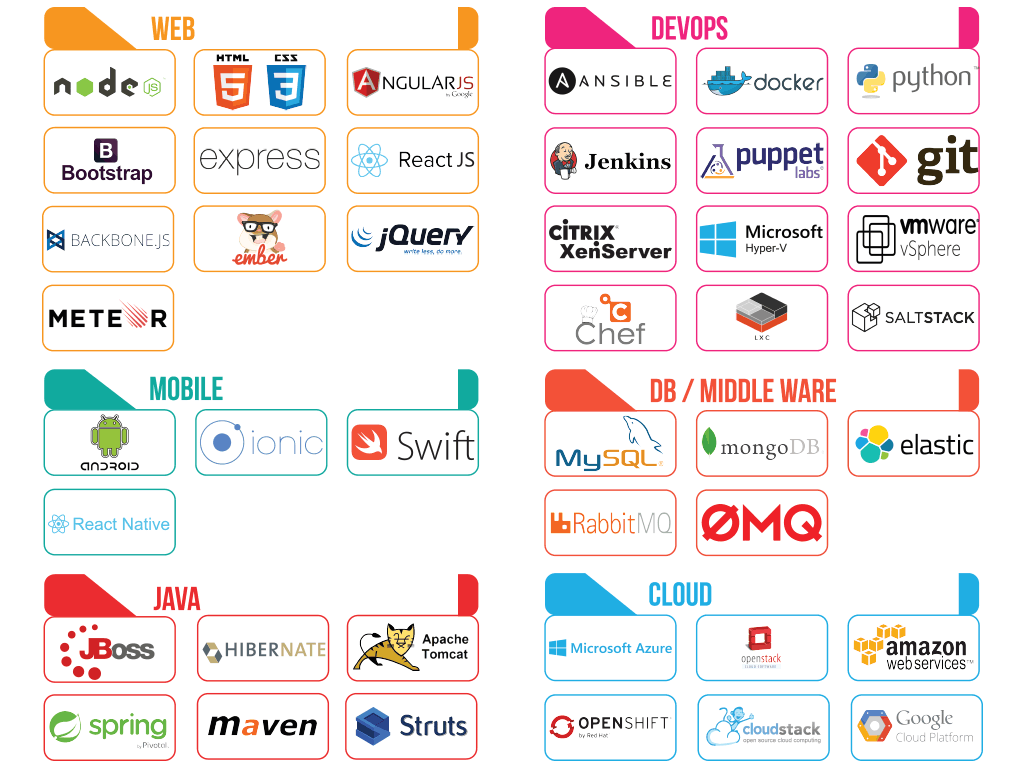How to Choose the Right Technology Stack for Your Software Product?

In today’s fast-paced technological landscape, choosing the right technology stack is crucial for the success of any software product, remember “done is better than perfect“. The technology stack forms the foundation of your product, encompassing programming languages, frameworks, libraries, and tools. Making informed decisions about the technology stack can significantly impact your product’s performance, scalability, and overall development process. This article will guide you through the essential steps to select the most suitable technology stack for your software product.
1. Define Your Project Requirements:
The first step in choosing the right technology stack is to clearly define your project’s requirements. Understand the purpose and scope of your software product. Identify the specific features and functionalities it should offer, as well as any performance expectations. Consider factors such as the target platform (web, mobile, desktop) and the anticipated number of users.
2. Assess Your Team’s Expertise:
Evaluate the technical skills and expertise of your development team. Take into account their familiarity with different programming languages and frameworks. Choosing technologies that align with your team’s strengths can streamline the development process and improve overall productivity.
3. Consider Scalability and Performance:
Scalability is a critical factor, especially if you expect your software product to grow over time. Look for technologies that can handle increasing user demands and traffic without compromising performance. Consider whether the technology stack can scale vertically or horizontally to accommodate future growth.
4. Research Market Trends:
Staying up-to-date with the latest trends in the technology landscape is essential. Research what technologies are popular in your industry and how successful products are leveraging them. Understanding market trends can help you make informed decisions about the most relevant and cutting-edge technologies.
5. Evaluate Community Support:
A strong and active community around a technology stack can be invaluable. Check the availability of documentation, online forums, and community support for the technologies you are considering. An active community ensures that you have access to knowledge and assistance when facing challenges.
6. Analyze Security Requirements:
Security is a top priority when developing any software product. Assess the security features and vulnerabilities associated with the technology stack you are considering. Look for frameworks and libraries with a strong security track record to protect your product and its users from potential threats.
7. Review Integration Capabilities:
Consider how well the technology stack integrates with other tools and services you may need to use. Seamless integration with third-party services and APIs can save time and effort during development. Make sure that the technology stack allows for easy collaboration with other systems.
8. Check Long-term Viability:
The technology landscape evolves rapidly, and some frameworks or tools may become outdated or unsupported over time. Choose technologies with long-term viability, actively maintained by their developers, and supported by a strong user base.
9. Evaluate Cost and Licensing:
Consider the cost implications of using certain technologies. Some frameworks or software may have licensing fees or ongoing costs. Balance the benefits of a technology stack with its associated expenses to stay within your budget.
10. Test Prototypes and Proof of Concepts:
Before fully committing to a technology stack, consider building prototypes or proof of concepts to test how the technologies perform in real-world scenarios. This hands-on approach can help you identify any potential issues early in the development process and make necessary adjustments.
Conclusion:
Choosing the right technology stack for your software product is a crucial decision that requires careful consideration. By defining your project requirements, assessing your team’s expertise, considering scalability and performance, and staying informed about market trends, you can make well-informed decisions. Additionally, analyzing security, community support, integration capabilities, long-term viability, and cost will contribute to a successful development process. Testing prototypes can validate your choices and ensure that the chosen technology stack aligns with your product’s goals and objectives.
Frequent questions:
- Can I change the technology stack during the development process?
While it is possible to switch technology stacks, it can be time-consuming and costly. It’s best to carefully evaluate your options and make a well-informed decision from the start. - What if my development team has expertise in multiple technology stacks?
If your team is proficient in different technologies, consider the specific requirements of your project and choose the stack that best aligns with those needs. - How do I ensure my software product remains compatible with future technological advancements?
Staying up-to-date with industry trends and incorporating flexibility into your architecture can help ensure your product remains adaptable to future changes. - Should I prioritize open-source technologies over proprietary ones?
Both open-source and proprietary technologies have their advantages and disadvantages. Choose based on your project’s specific needs and budget considerations. - Is it possible to switch to a different technology stack after the product is launched?
While possible, switching technology stacks after launch can be complex and risky. It’s generally more efficient to make informed decisions during the planning phase.


